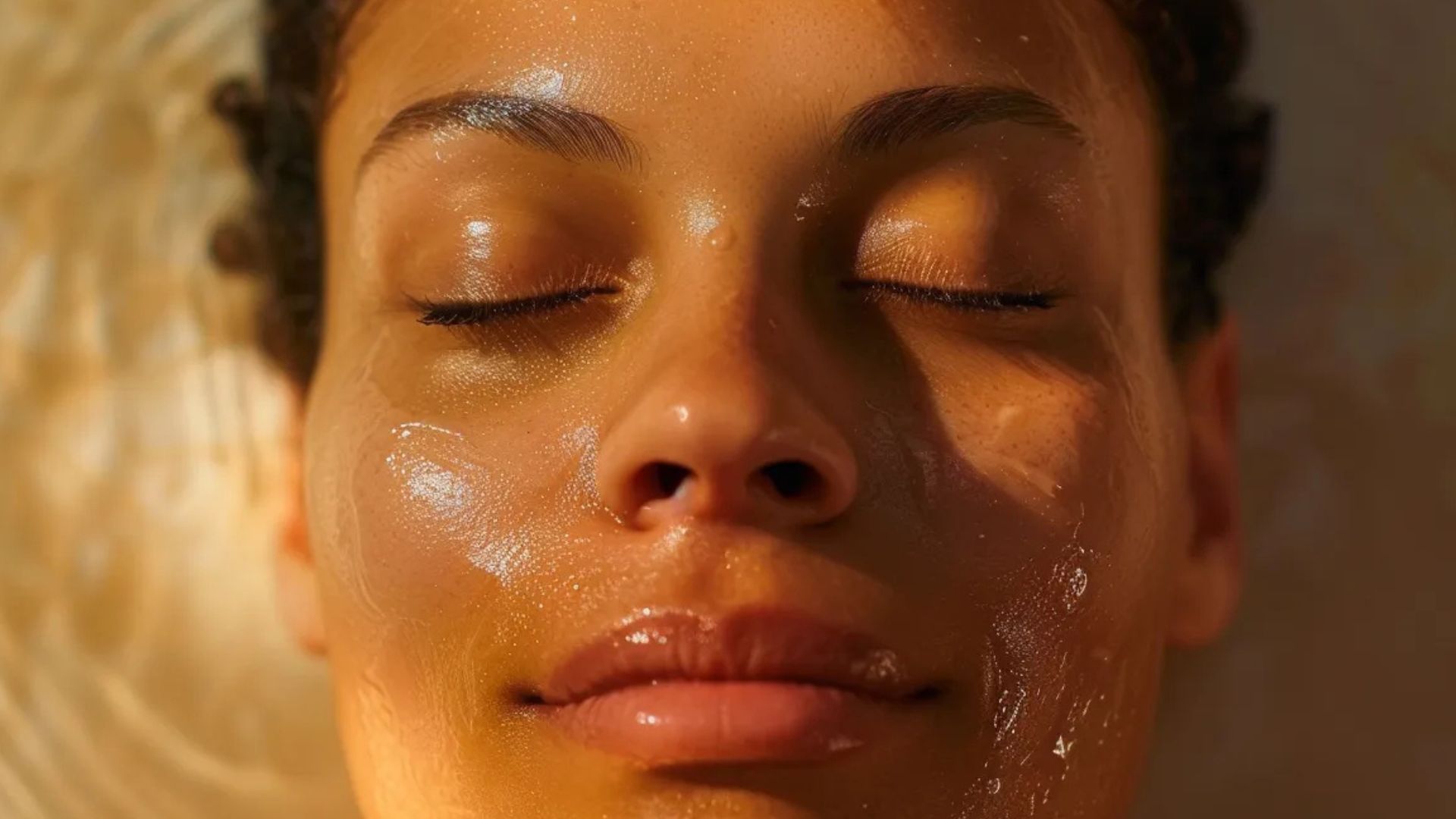Botox vs. Dermal Fillers - Which One Is Right for You

Understanding Botox and Dermal Fillers: Choosing the Best Option for Your Aesthetic Goals
Many individuals seek ways to achieve a more youthful appearance, leading them to consider options like Botox and dermal fillers. This blog post will clarify these treatments, highlight key differences between them, and assist readers in selecting the right option for their aesthetic goals. By understanding these procedures, readers can make informed decisions and feel confident in their choices, addressing concerns such as potential side effects, recovery time, and cost. Whether it’s about reducing dynamic wrinkles or enhancing facial features, this content aims to provide valuable insights for a successful outcome.
Key Takeaways
• Botox temporarily paralyzes muscles to reduce fine lines and wrinkles
• Dermal fillers restore volume and enhance facial contours without surgery
• Understanding potential side effects helps in making informed treatment choices
• Consulting a qualified provider ensures personalized treatment plans and safety
• Costs for treatments vary; insurance coverage can influence decision-making options
Understanding Botox and Dermal Fillers

Botox is defined as a neuromodulator, commonly administered through intramuscular injection at Belviso Medical Spa to reduce fine lines and wrinkles by temporarily paralyzing muscles. In contrast, dermal fillers consist of various substances that add volume to areas of the face, enhancing contours and smoothing out deeper lines. Understanding the potential irritation and adverse events associated with both options is crucial for informed decision-making.
By examining the data on their uses and effects, individuals can better choose the treatment that aligns with their aesthetic goals in collaboration with their primary care provider.
Defining Botox and Its Uses
Botox primarily functions as a neuromodulator that relaxes specific facial muscles, aiding in the reduction of fine lines and wrinkles. Before treatment, it is essential for individuals to disclose their medical history to the provider, as certain conditions or medications could elevate the risk of side effects such as erythema or irritation. Furthermore, understanding how health insurance may cover such procedures can impact decision-making regarding plastic treatments, ensuring patients are well-informed about any potential costs associated with injury or recovery time.
Defining Dermal Fillers and Their Functions
Dermal fillers are injectable substances used in cosmetics to restore volume and smoothen wrinkles, offering an effective solution for individuals seeking to enhance their facial contours. These fillers can also address concerns related to acne scarring, providing a smoother skin texture.
In the context of plastic surgery, it is vital for patients to discuss their medical history, including any potential conditions like diplopia, and how insurance options such as Medicare may influence their treatment decisions.
• Understanding the role of dermal fillers in enhancing facial aesthetics.
• Exploring the types of materials used in fillers and their effects on the skin.
• Recognizing the potential benefits for individuals with acne scars.
• Highlighting the importance of medical consultations before treatment.
• Discussing insurance coverage, including Medicare, for aesthetic procedures.
Key Differences Between Botox and Dermal Fillers

The mechanism of action for Botox involves relaxing specific facial muscles to reduce fine lines, while dermal fillers add volume to restore facial contours. These treatments vary in duration; Botox effects generally last a few months, whereas dermal fillers can provide longer-lasting results. Suitable treatment areas differ, with Botox typically used for dynamic wrinkles that affect facial expression, and dermal fillers ideal for static lines and volume loss. Understanding these distinctions is essential for patients to make informed choices, considering factors such as medical history, including any potential for anaphylaxis or other complications, and insurance options like Medicaid.
Mechanism of Action for Botox
The mechanism of action for Botox involves targeting the neuromuscular junction, where the neurotransmitter acetylcholine facilitates communication between nerves and muscles. By blocking this neurotransmitter, Botox effectively prevents muscle contractions, leading to a relaxation of facial muscles that reduces the appearance of fine lines and wrinkles. This process is crucial for individuals seeking aesthetic improvements without the need for surgical procedures, as it minimizes potential complications, such as excessive blood flow or seizures, while ensuring that only qualified physicians administer the treatment to maximize safety and efficacy.
Mechanism of Action for Dermal Fillers
Dermal fillers work by injecting gel-like substances into specific areas of the face to restore volume and provide structure. These substances, often made from hyaluronic acid or other biocompatible materials, help to plump up wrinkles and enhance facial contours without invasive surgery. Unlike Botox, which prevents muscle contractions, dermal fillers physically fill the targeted areas, offering immediate results that can address volume loss due to aging or other factors, while prioritizing safety to minimize potential risks associated with treatments.
Duration of Effects for Botox and Dermal Fillers
The duration of effects for Botox and dermal fillers varies significantly, which is an important consideration for anyone exploring these aesthetic options. Typically, Botox results last for about three to four months, making it ideal for targeting fine lines, especially on the forehead, and allowing individuals to achieve smooth skin without a lengthy commitment. On the other hand, dermal fillers can provide results that span six months to a year or more, depending on the type used and the areas treated, such as volume restoration that could complement a forehead lift procedure. Consulting with a qualified surgeon can provide insights on how these durations align with personal aesthetic goals and maintenance plans, especially for those researching treatment options online.
Suitable Areas for Treatment With Botox vs. Dermal Fillers
When considering cosmetic surgery options, the suitable areas for treatment with Botox versus dermal fillers differ significantly. Botox is primarily effective for dynamic wrinkles, typically found on the forehead, between the brows, and around the eyes, as it relaxes the underlying muscles responsible for facial expressions. In contrast, Juvéderm filler and Sculptra are ideal for restoring volume in areas such as the cheeks, temples, and nasolabial folds, addressing concerns related to loss of fullness and deeper lines. Understanding these distinctions helps individuals align their aesthetic goals with the right treatment approach, ensuring effective results that enhance their natural beauty.
Choosing the Right Treatment for Your Aesthetic Goals

Assessing skin concerns involves recognizing areas needing improvement, such as elasticity and volume loss. Evaluating desired outcomes can guide individuals in choosing between Botox and dermal fillers. Consulting with a qualified provider in Rhode Island ensures personalized treatment plans, considering any effects from medications like cold medicine or the use of lidocaine during procedures. This approach fosters informed decisions and optimal results.
Assessing Your Skin Concerns
Assessing skin concerns is an essential step in determining the most suitable treatment for achieving individual aesthetic goals. Individuals should consider factors such as skin elasticity, volume loss, and specific conditions like ulcerative colitis, as these may influence treatment options and dosage; for instance, certain medications like ibuprofen could interact with procedures. A thorough consultation with a qualified provider can help address these concerns and develop a customized security solution tailored to the patient's unique needs.
| Skin Concern | Possible Treatment | Considerations |
|---|---|---|
| Fine Lines | Botox | Evaluate underlying muscle activity and neurotransmitter interactions. |
| Volume Loss | Dermal Fillers | Assess skin elasticity and any relevant medical history. |
| Uneven Texture | Both Botox and Fillers | Consider medications and potential side effects. |
Evaluating Desired Outcomes
When evaluating desired outcomes for aesthetic treatments, individuals should consider their specific concerns and expectations. For instance, those interested in Botox for under eye bags may seek a smoother appearance through targeted applications, while others may prefer dermal fillers to restore volume and enhance facial contours. Additionally, it is essential to disclose any relevant factors, such as pregnancy or conditions like hyperhidrosis, as these can influence both treatment options and potential results.
Consulting With a Qualified Provider in Rhode Island
Consulting with a qualified provider in Rhode Island is vital for individuals contemplating Botox or dermal fillers. A licensed professional can evaluate each person's unique needs, ensuring that considerations such as muscle contraction or conditions like autonomic dysreflexia are taken into account. For example, discussing the potential impact of taking antibiotics on the treatment can help guide patients toward the safest and most effective options, preventing complications that may arise when seeking budget-friendly solutions like Groupon Botox offers.
Safety and Risks Involved

Common side effects of Botox, including symptoms like shortness of breath, and reactions to dermal fillers can vary among individuals. Understanding these effects is essential, as well as recognizing the critical role licensed professionals play in ensuring safety. Utilizing neurotoxin products such as Xeomin and cosmetic Botox must be handled with care to protect the respiratory system and mitigate risks effectively.
Common Side Effects of Botox
Common side effects of Botox, a popular muscle relaxant, may include symptoms such as mild bruising and swelling at the injection site, headaches, or transient eyelid drooping. Patients should be cautious if they have taken aspirin prior to treatment, as it may increase the risk of bruising. Engaging in a clinical trial for Botox, such as those conducted by AbbVie, can also lead to insights on more rare side effects, underscoring the importance of consulting with a licensed professional before proceeding with injections.
• Mild bruising and swelling at the injection site
• Headaches following treatment
• Transient eyelid drooping
• Increased bruising risk with aspirin use
• Importance of consulting with licensed professionals
Common Side Effects of Dermal Fillers
Common side effects associated with dermal fillers can include swelling, bruising, and tenderness at the injection site. In certain cases, individuals may experience allergic reactions influenced by previous conditions in neurology or interactions with substances such as alcohol. It is important to communicate any relevant medical history to providers, as health insurance may factor into the management of these side effects, ensuring that patients receive the best care and recovery options available.
Importance of Choosing a Licensed Professional
Choosing a licensed professional for treatments such as Botox and dermal fillers is paramount for ensuring safety and efficacy. A qualified practitioner has the expertise to assess individual needs and minimize potential risks, including serious complications like necrosis or adverse reactions related to substances in products such as Allergan. Patients can find reassurance in knowing that licensed providers adhere to strict protocols, effectively reducing the likelihood of side effects that might occur in less regulated settings.
• Importance of selecting a licensed provider.
• Expert assessment of individual needs.
• Minimizing risks associated with treatments.
• Reducing likelihood of serious complications.
• Ensuring adherence to safety protocols.
Recovery and Aftercare

Immediately following Botox injections, patients should focus on specific care to ensure minimal side effects, such as avoiding excessive movement of skeletal muscle. For dermal filler treatments, care should center around managing puffiness and preventing infections, with attention to signs of rash. Long-term care tips for optimal results include regular follow-ups with a cosmetic surgeon to maintain desired outcomes and address any concerns, such as impacts on conditions like overactive bladder or allergies to products like Juvéderm Volux.
Immediate Care Following Botox Injections
After receiving masseter botox injections, patients are advised to follow precise immediate care guidelines to enhance the effectiveness of the therapy. It is essential to avoid strenuous exercise for at least 24 hours to minimize the risk of drug displacement and potential side effects. Additionally, individuals should refrain from manipulating the treatment area, such as the cheek, to allow the botox to settle properly and achieve optimal results.
Immediate Care Following Dermal Filler Injections
Immediately after dermal filler injections, it is essential to follow specific care guidelines to optimize results and reduce the risk of side effects. Patients should be advised to avoid sleeping on their face for at least the first night to prevent pressure on treated areas, particularly the lips, which may lead to uneven outcomes. Additionally, maintaining communication with a healthcare provider about any unusual signs or discomfort is crucial for ensuring a smooth recovery process and achieving the desired aesthetic goals.
Long-Term Care Tips for Optimal Results
For individuals seeking optimal results from their Botox and dermal filler treatments, long-term care plays a vital role. Regular check-ups with a licensed nurse practitioner can help monitor the effects on facial anatomy, ensuring that desired results, such as maintaining a youthful smile, remain intact over time. Staying informed about the incidence of common side effects and discussing any concerns with a healthcare provider will further enhance the longevity of aesthetic improvements.
| Long-Term Care Tips | Key Considerations | Benefits |
|---|---|---|
| Regular Follow-Ups | Visit a nurse practitioner to assess treatment outcomes. | Helps maintain desired aesthetic results. |
| Monitor Side Effects | Be aware of any changes in your smile or discomfort. | Early detection of issues for timely management. |
| Stay Hydrated | Maintain proper hydration to support skin health. | Enhances the skin's appearance and minimizes risks. |
Cost Considerations for Treatments

Understanding the financial aspects of Botox and dermal fillers is crucial for informed decision-making. Average costs for Botox treatments in Rhode Island, along with the price range for dermal fillers, will be explored. Additionally, the impact of health insurance coverages, including potential options for individuals with conditions such as myocardial infarction, will be discussed, as will available payment options to help manage expenses related to your dermis care.
Average Costs of Botox Treatments in Rhode Island
The average cost of Botox treatments in Rhode Island can vary based on factors such as the provider's experience, geographic location, and specific treatment areas. Generally, the price may range from $10 to $15 per unit, with most patients requiring between 20 to 60 units for desired results. It is essential for individuals to consult with a qualified provider to discuss their unique needs, as factors like inflammation or sensitivity around the treatment area, as well as previous use of other substances such as hydroxyapatite or acid, can influence the overall treatment plan.
• The average cost of Botox treatments varies.
• Treatment prices range from $10 to $15 per unit.
• Consulting with a qualified provider is crucial.
Average Costs of Dermal Fillers
The average costs of dermal fillers can vary widely depending on several factors, including the type of filler used and the experience of the provider. Generally, patients may expect to pay anywhere from $600 to $2,500 per treatment to restore volume and enhance facial rejuvenation. It is essential for individuals to consider these costs in relation to their overall aesthetic goals, alongside any necessary pain management strategies, especially if they are also exploring Botox for conditions like blepharospasm, where treatment pricing may differ significantly based on specific needs.
Insurance Coverages and Payment Options
Understanding insurance coverages and payment options for treatments like Botox and dermal fillers can significantly impact the decision-making process for individuals seeking aesthetic improvement. In Rhode Island, patients should explore their insurance plans to determine if they cover procedures sometimes deemed necessary for health reasons, such as addressing certain diseases or allergic reactions related to skin conditions. Engaging in consultations about intradermal injections may also reveal payment plans or financing options that alleviate immediate financial burdens, making treatments more accessible while ensuring safety and compliance with medical advice.
Conclusion
Understanding the distinctions between Botox and dermal fillers is crucial for individuals seeking to achieve their aesthetic goals. Each option serves a unique purpose: Botox relaxes muscles to minimize fine lines, while dermal fillers restore volume and enhance facial contours. Armed with this knowledge, patients can have informed discussions with licensed providers to develop tailored treatment plans. Ultimately, making educated choices ensures enhanced natural beauty and optimal satisfaction with aesthetic outcomes.
Our Recent News & Articles


We are here to enhance your natural beauty. When you walk into our medical spa, the focus is on you. We promote a collaborative treatment plan between the provider and client to achieve a realistic aesthetic outcome.
All Rights Reserved | Bel Viso Medical Spa
WEB SERVICES BY: LEVELUP DIGITAL SOLUTIONS



